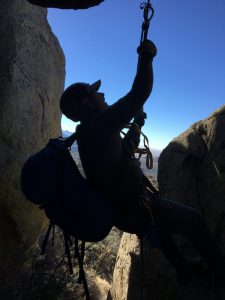What treatments are good for climbing injuries?
Climbing injuries come in many different varieties because of the unusual demands of the sport. The shoulders, in particular, are vulnerable. Two of the most common shoulder injuries are to the rotator cuff muscles and partial dislocations. The other area that is highly susceptible to damage is the fingers. The common finger complaints are tendonitis and pulley tears.
We look at different forms of treatment and show how they might help you to recover.

Climbing injuries
Treating shoulder and finger injuries
The shoulder is an intricate joint. Obviously, you use your shoulders in numerous day to day activities. However, if you get a rotator cuff injury in the shoulder, the important first step is to rest it. As simple as this sounds, it is very important. Because the shoulder is so intricate, overuse (especially, after injury) can cause further inflammation.
If you are someone who lifts weights, you should stop all your upper body exercises. And if your job involves lifting you should stop this for a period of time too. In the very early stages, icing the shoulder may help bring down any inflammation, but this is more helpful if the injury is acute.
To fully rehabilitate the shoulder it is important to see a specialist. Rotator cuff injuries rarely fully recover without some professional assistance. A healthcare professional who specialises in maintaining and improving movement and mobility is ideal.
If you suffer a shoulder dislocation you need to have it put back into place by someone who knows what they are doing. You will feel immediate relief once the shoulder is back in place. But don’t be tempted to let someone try that doesn’t know what they are doing. This can cause further complications further down the line. In this case, not only must the shoulder be rested, but it must also be immobilised.
The arm is usually left in a sling for about 1-3 weeks. If the injury doesn’t warrant surgery, then professional physical therapy is recommended as soon after the initial immobilisation as is possible.
If you get tendonitis in the fingers it can be incredibly painful and restrictive. In many cases, but not always, surgery is the best option. Obviously, it pays to see your GP to have a proper assessment made.
What types of therapists can help with climbing injuries?
Osteopaths – as well as treating the injured area and other areas of the body, they are also likely to give advice and programmes on exercise and stretching to aid your rehabilitation and prevent further injury.
Sport’s therapy – a sports massage promotes flexibility, reduces fatigue, improves endurance, helps prevent injuries and prepares your body for future climbing.
Physiotherapy –may involve therapeutic exercise to improve your strength and range of motion.
They can also help with joint mobilisation, manipulation and soft tissue massage, as well as stretching and trigger point therapy to reduce stiffness and to relieve pain. Remember to always seek out the help of suitably qualified professionals.
We hope this information is useful for you. If you have any questions about our treatments, please contact us. You can find us in Mill Hill Broadway and Islington. If you like this blog, please share! We are always happy to help.



